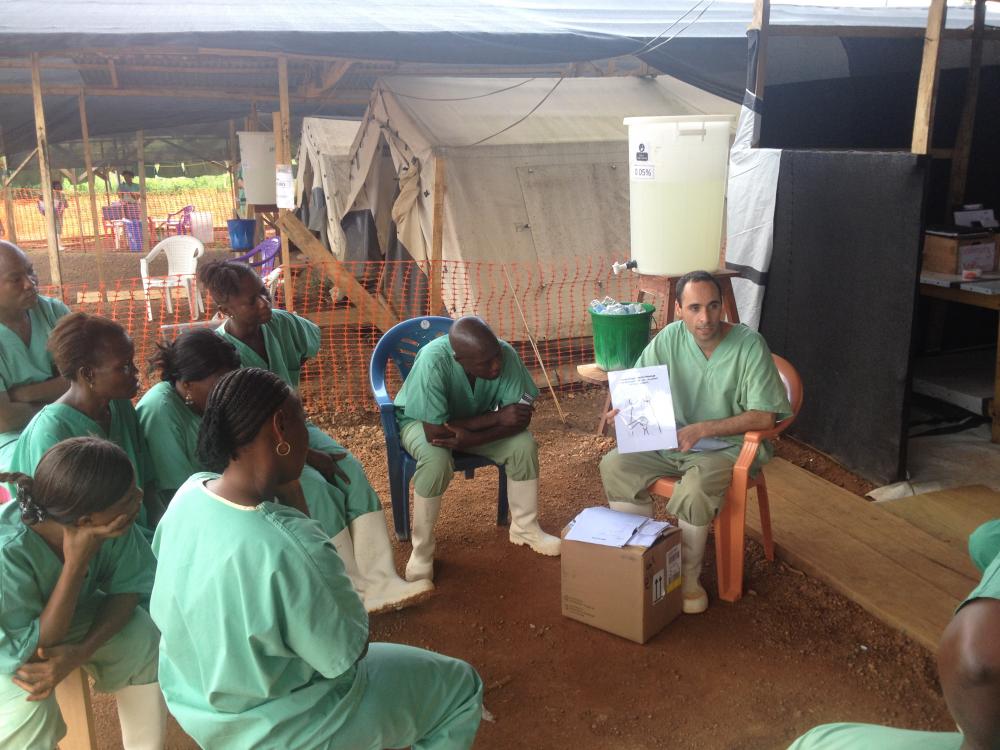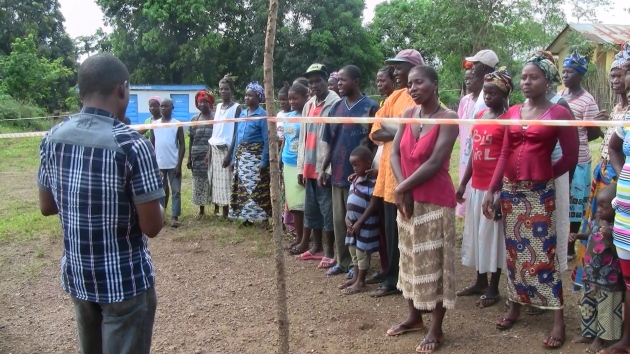
EBOLA'S LONG-TERM CONSEQUENCES
The aftershocks of the Ebola epidemic could have a devastating impact on maternal health in West Africa, according to Pulitzer Center grantee Erika Check Hayden. "Pregnancy seems to make women uniquely vulnerable to the effects of the disease, and babies born to infected women have not been known to survive. Compounding these individual tragedies, the blood and abundant bodily fluid that accompanies delivery or miscarriage pose enormous risk of infection to health workers," writes Erika in Nature.
Thus far, the epidemic has infected about 24,000 people, killing 9,700 of those, and although it is on the wane it is unclear when it will end. For maternal health, the effects have been catastrophic. "The United Nations Population Fund (UNFPA) estimates that, either directly or indirectly, the epidemic will result in as many 120,000 maternal deaths by the end of October," Erika reports.
"Researchers, public-health experts and activists worry that this trend could undermine advances made in the region's health, education and more. For instance, children whose mothers die may end up orphans and be forced to choose work over school. Teenagers have found themselves becoming family breadwinners."
A DIFFERENT KIND OF MEDICINE FOR INDIA
In a feature story for Foreign Policy, Pulitzer Center grantee Michael Edison Hayden notes that "India—a country that exports so many doctors to the West that the American Association of Physicians of Indian Origin claims that one in seven American doctors is of Indian heritage—has long had a complicated relationship with its own traditional medicines."
This dates back to the colonial period, when Western medicine first arrived in the subcontinent and became the treatment of choice for the region's elite. Today, says Michael, a patient choosing between Western or traditional medicine in India is informed by issues of class, religious tradition, accessibility, and identity.
But traditional medicines are making a comeback under Prime Minster Narendra Modi. Michael reports that Modi is promoting a new ministry of AYUSH—an acronym whose letters stand for an array of traditional Indian systems. "The cabinet-level office is tasked with reviving and promoting Indian traditional health remedies, covering everything from yoga—by now a well-known export—to Siddha, an ancient Tamil system of medicine believed to be founded in what is now the state of Tamil Nadu, and Unani, a Greek-Arabic medicine also practiced in parts of South Asia."
POLIO'S UNLIKELY COMEBACK IN SYRIA
Jihadists from Pakistan's tribal areas who joined the fight against the Assad regime in Syria brought with them not only a brutal ideology but also a crippling strain of the polio virus. Previously eradicated in Syria, polio re-surfaced two years ago in eastern regions under rebel-control. Medical experts say that the polio virus found in Syria was identical to the Pakistani strain.
A multi-part series for National Geographic by Pulitzer Center Grantees Jason Motlagh and Tim McGirk concludes this week with a remarkable video about the struggle to contain the outbreak. Shot from inside rebel-held areas of Syria, it tells the story of an impressive army of 8,000 volunteers who have managed to vaccinate 1.4 million children despite being targeted by regime airstrikes and jihadist suspicions.
WRITING FOR THEIR FELLOW CITIZENS
Language access in justice systems, rights of ex-offenders to vote, and controversy over the world's largest solar thermal plant are but a few of the reporting initiatives undertaken by the 2014-2015 crew of William & Mary Sharp Seminar students. In its fourth year, this unique Campus Consortium initiative takes students through journalistic story development from start to finish, working with Pulitzer Center grantee journalists and staff. Many students rounded out their reporting with separate travel grants provided through our on-campus partner the Roy R. Charles Center for Academic Excellence.
Until next week,
Tom Hundley
Senior Editor




